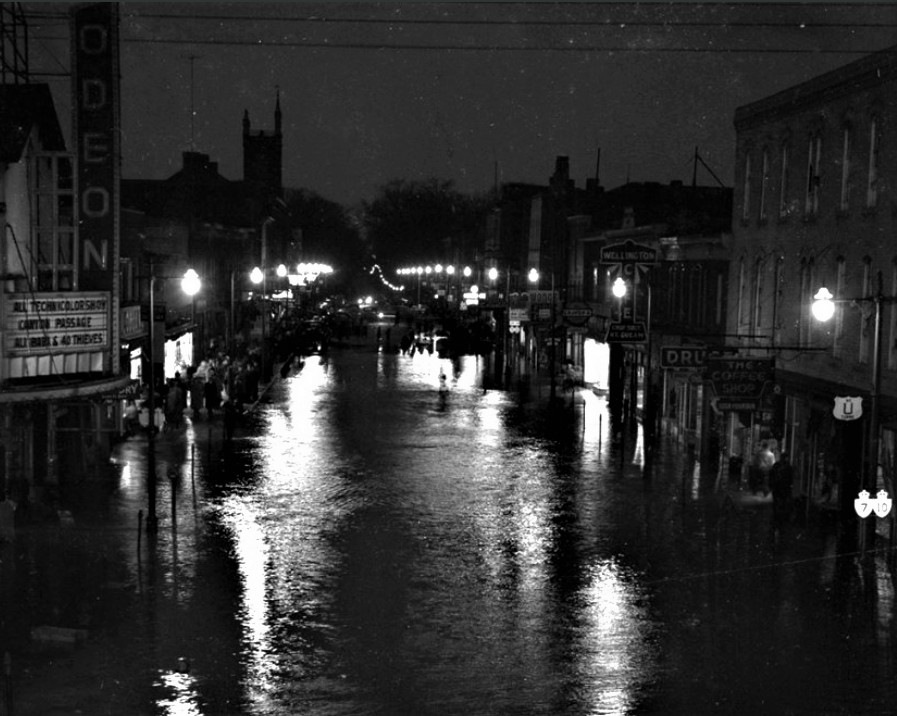
Brampton’s downtown is at a breaking point – will $600M plan to fix the flood problem work?
Mother Nature can be a harsh mistress.
Brampton has been at the mercy of her wrath ever since the founding fathers decided to bury the Etobicoke Creek under its downtown core.
Pictures from the historic flood of 1948 (fish swimming in streets) are a startling reminder of how vulnerable people and man-made structures are in the wake of a natural disaster.
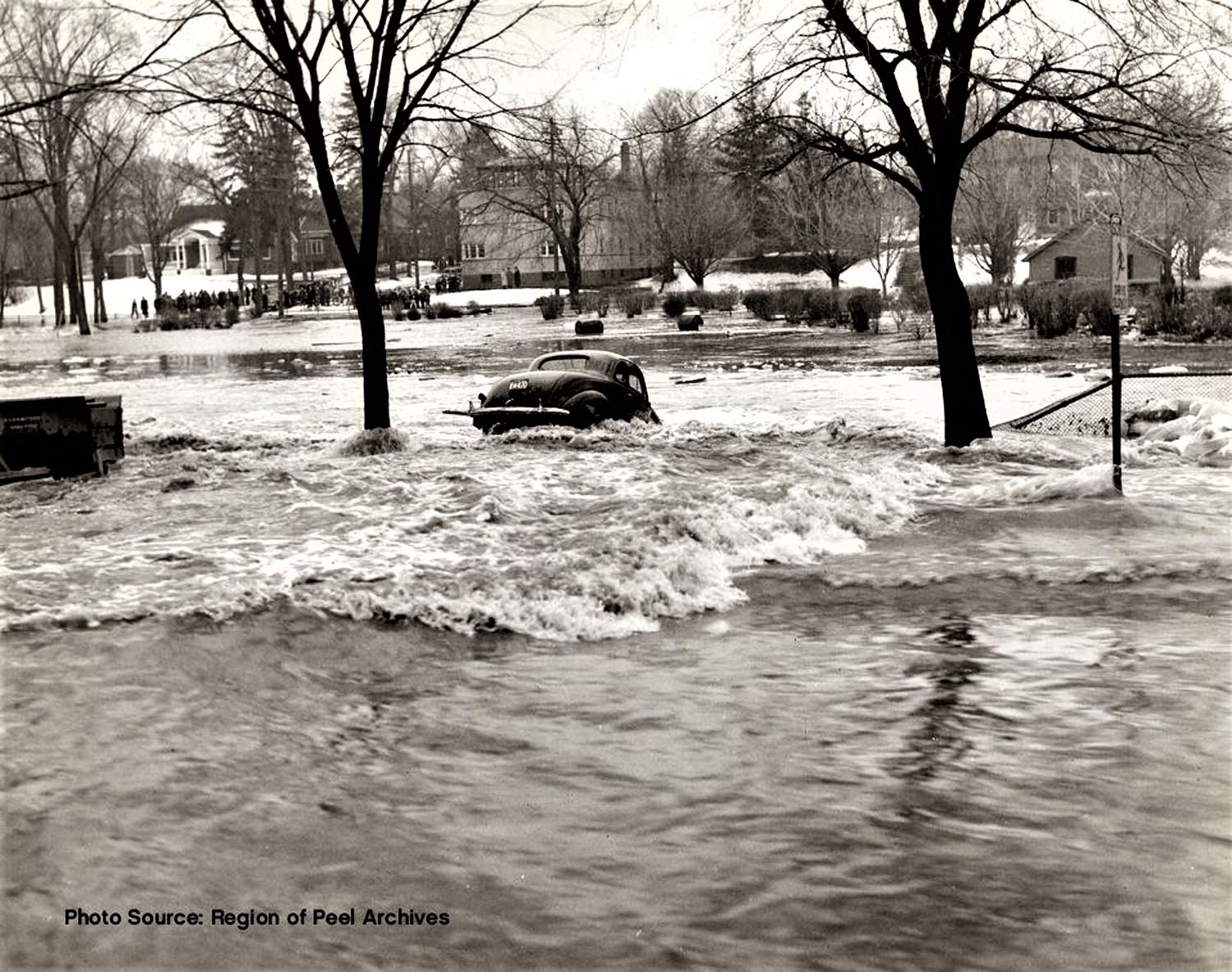
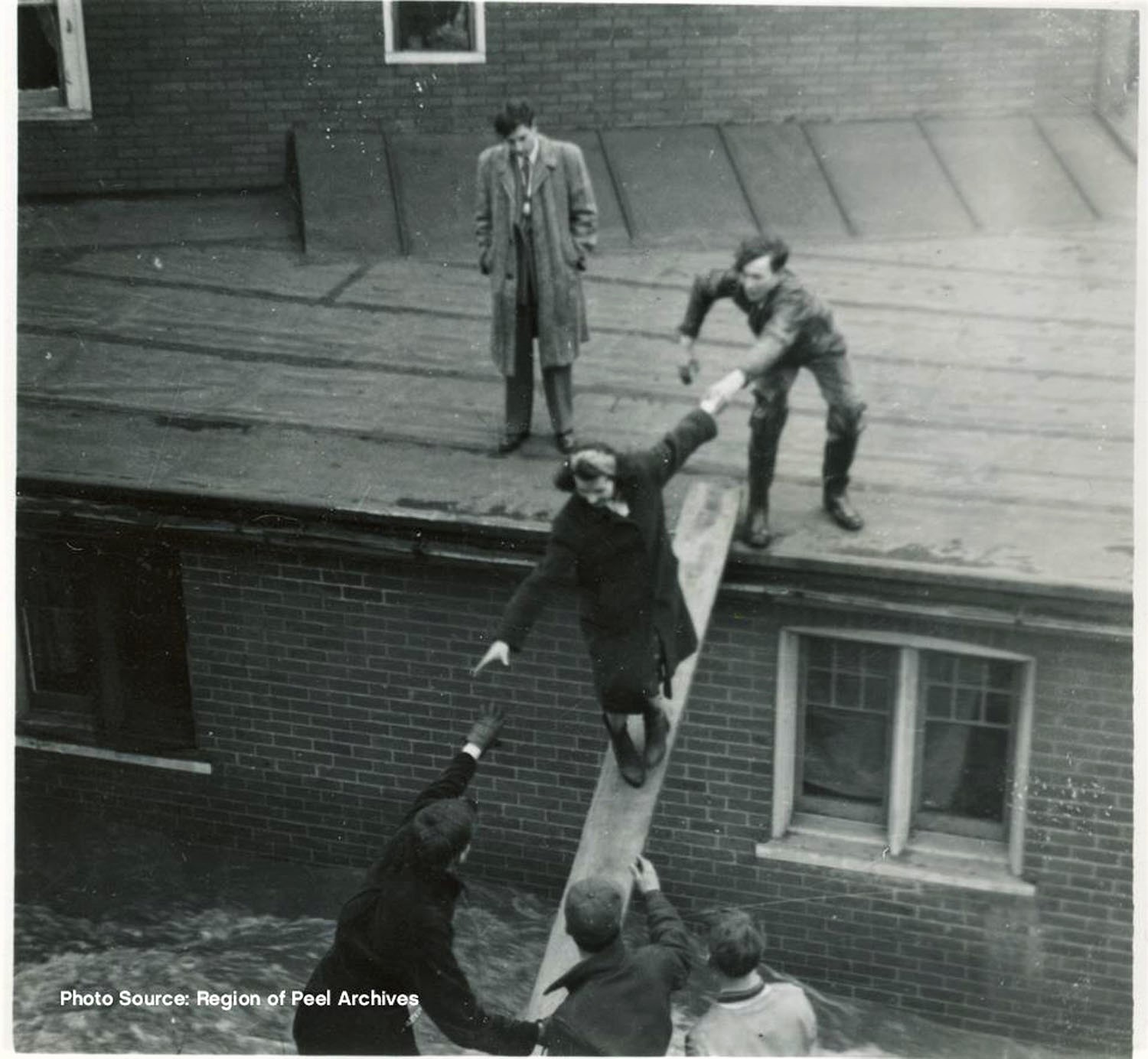
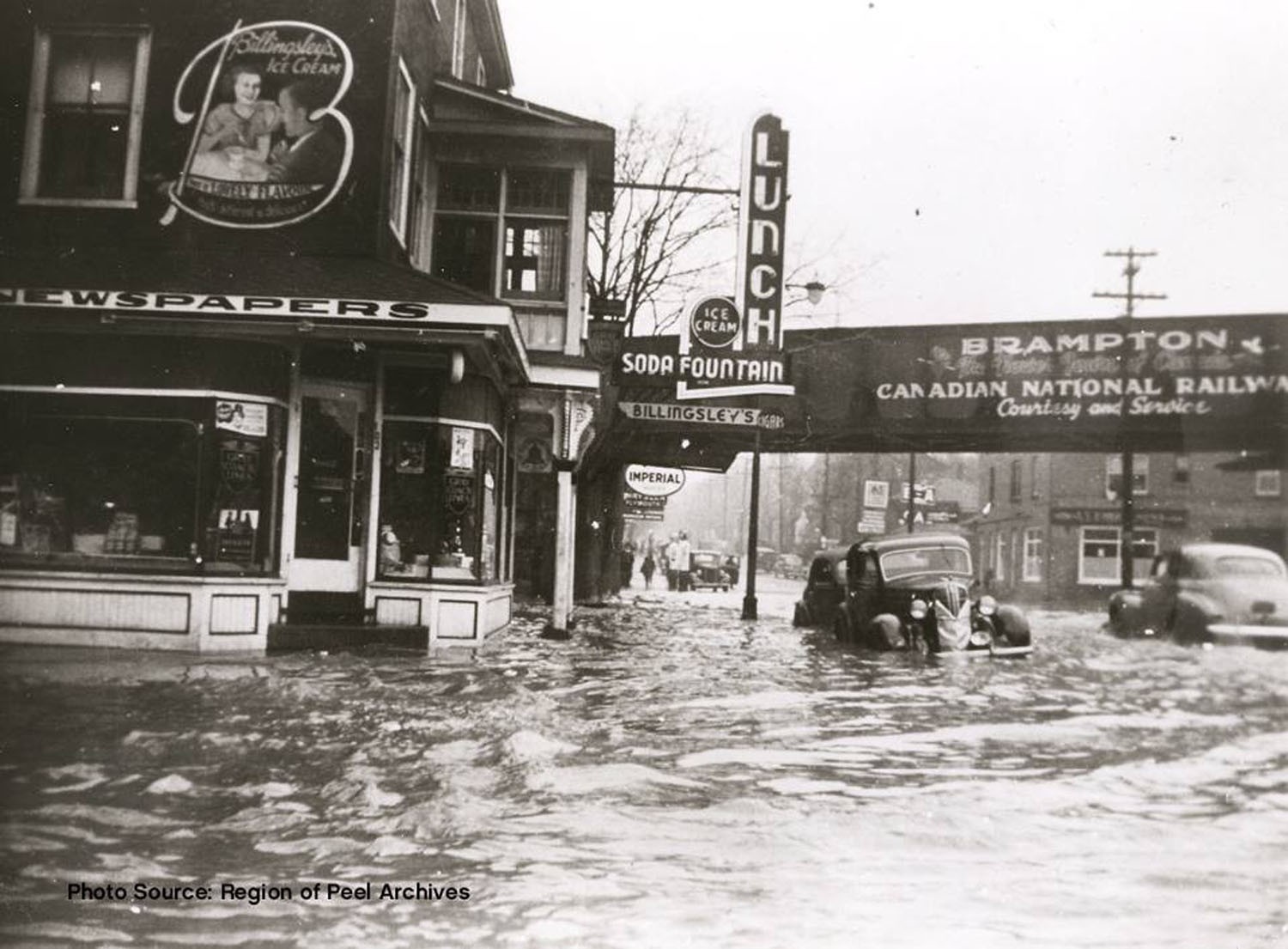
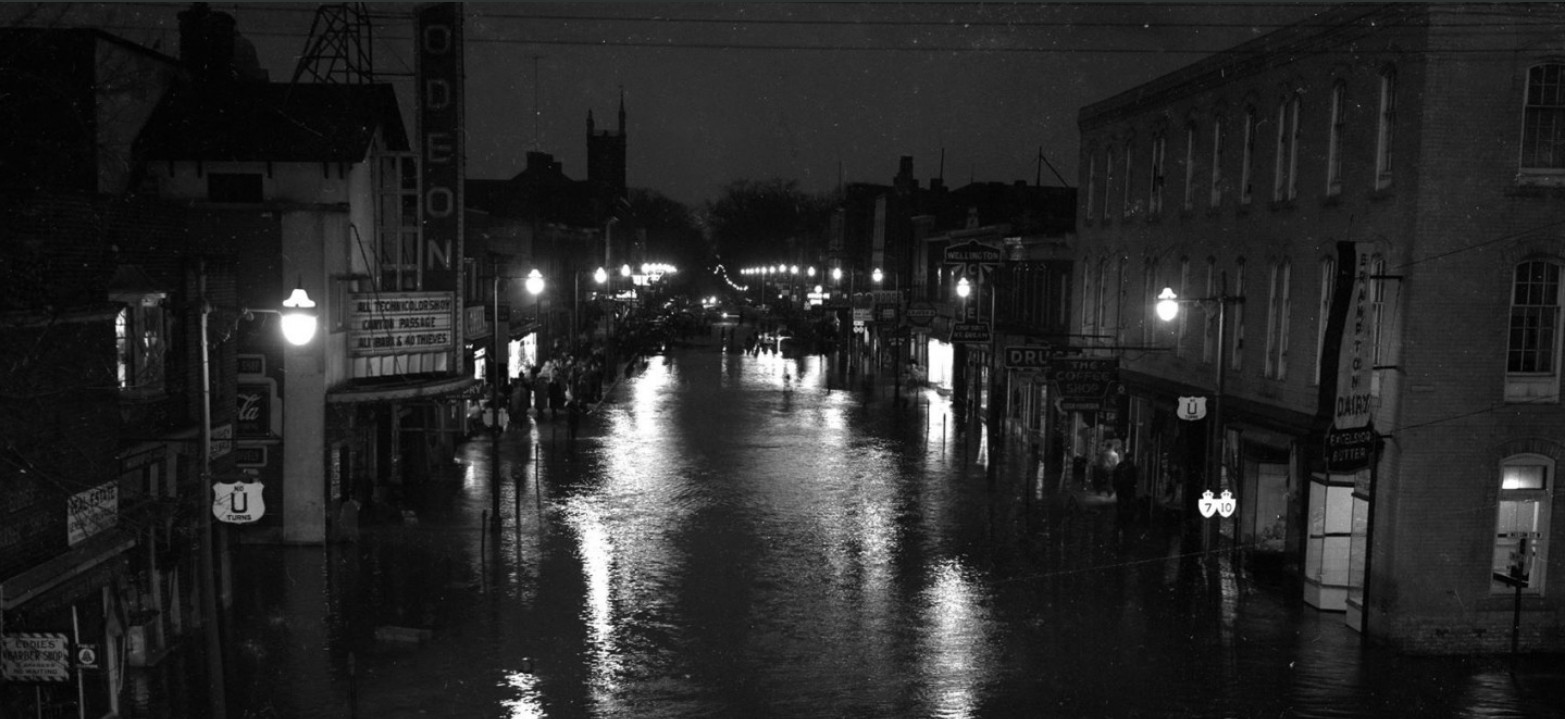
In 1952, the provincial government tried to secure the city’s future by financing and constructing a bypass channel to help remove excess water, before, during and after a massive flood.
The timing was perfect. Two years later, Hurricane Hazel, the deadliest and costliest hurricane in southern Ontario history, killed 81 people and caused $100 million in damages to the Toronto area. Magically, it slipped by Brampton without doing major harm.
But a new benchmark was set. The province uses a Hurricane Hazel-like storm standard to drive forward the need for flood mitigation. Special Policy Area (SPA) designations were put in place throughout the province, Brampton included. If the term ‘Special Policy Area’ sounds Orwellian, the city now seems intent on trying to disentangle itself from it. It has stymied growth for decades, and there’s a very high price tag being put on what is needed to fix it. Brampton (along with the Toronto Region Conservation Authority and Peel region) is now taking those steps.
In 2018, The Master Service Agreement between TRCA and the City approved a budget of $3 million to find a solution that will involve a complete reimaging of the city centre, a dynamic new river-walk, new bridges and much more. The TRCA made the application (in concert with the city and Peel region) and received $1.5 million in federal funding from the Ministry of Public Safety through its National Disaster Mitigation program. This money was specifically earmarked for an environmental assessment on Brampton’s SPA, a horseshoe-shaped piece of land in the downtown core. The aim is to find a long-term answer to Mother Nature’s confounding threat that looms like a black storm cloud over the city’s centre.
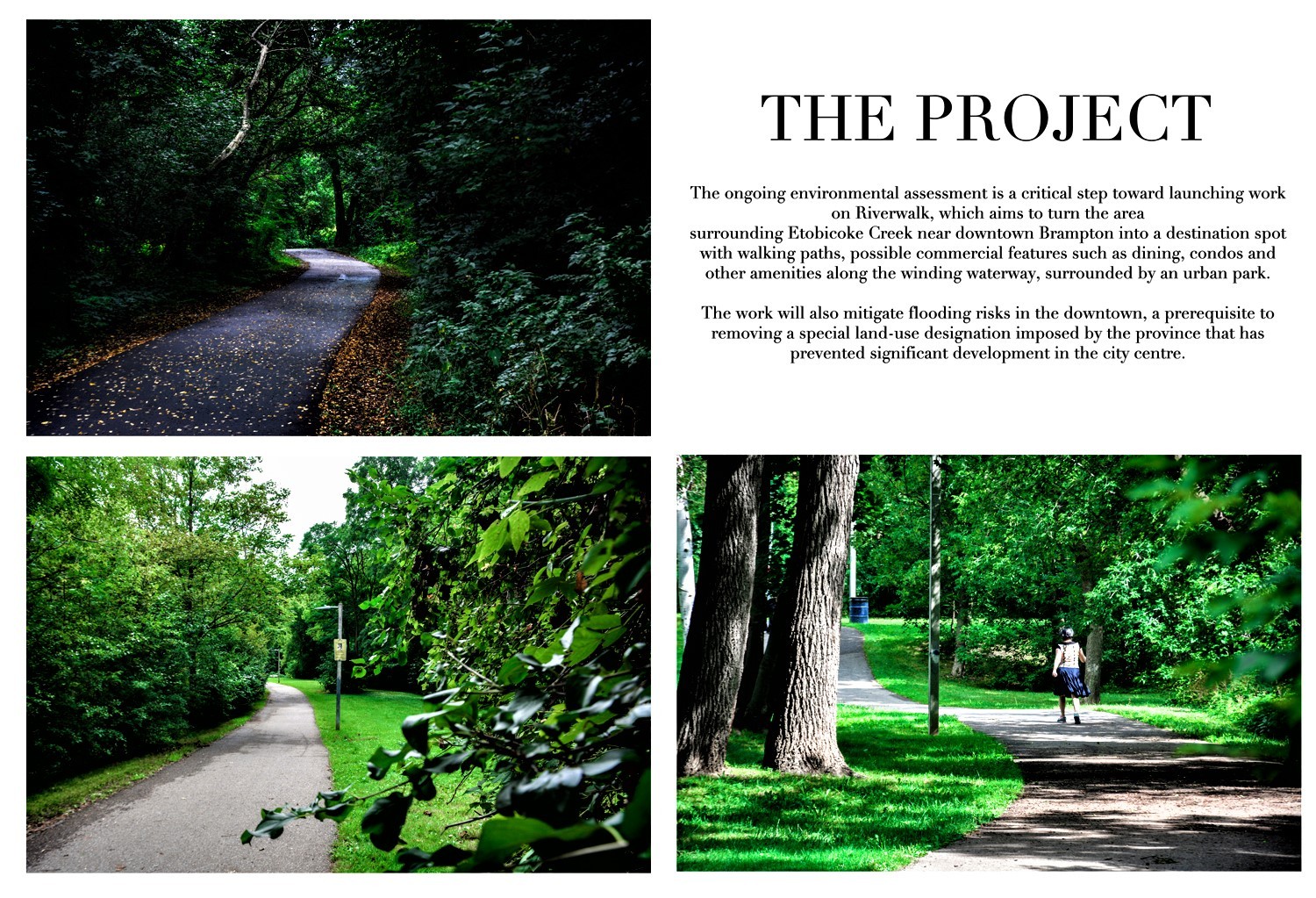
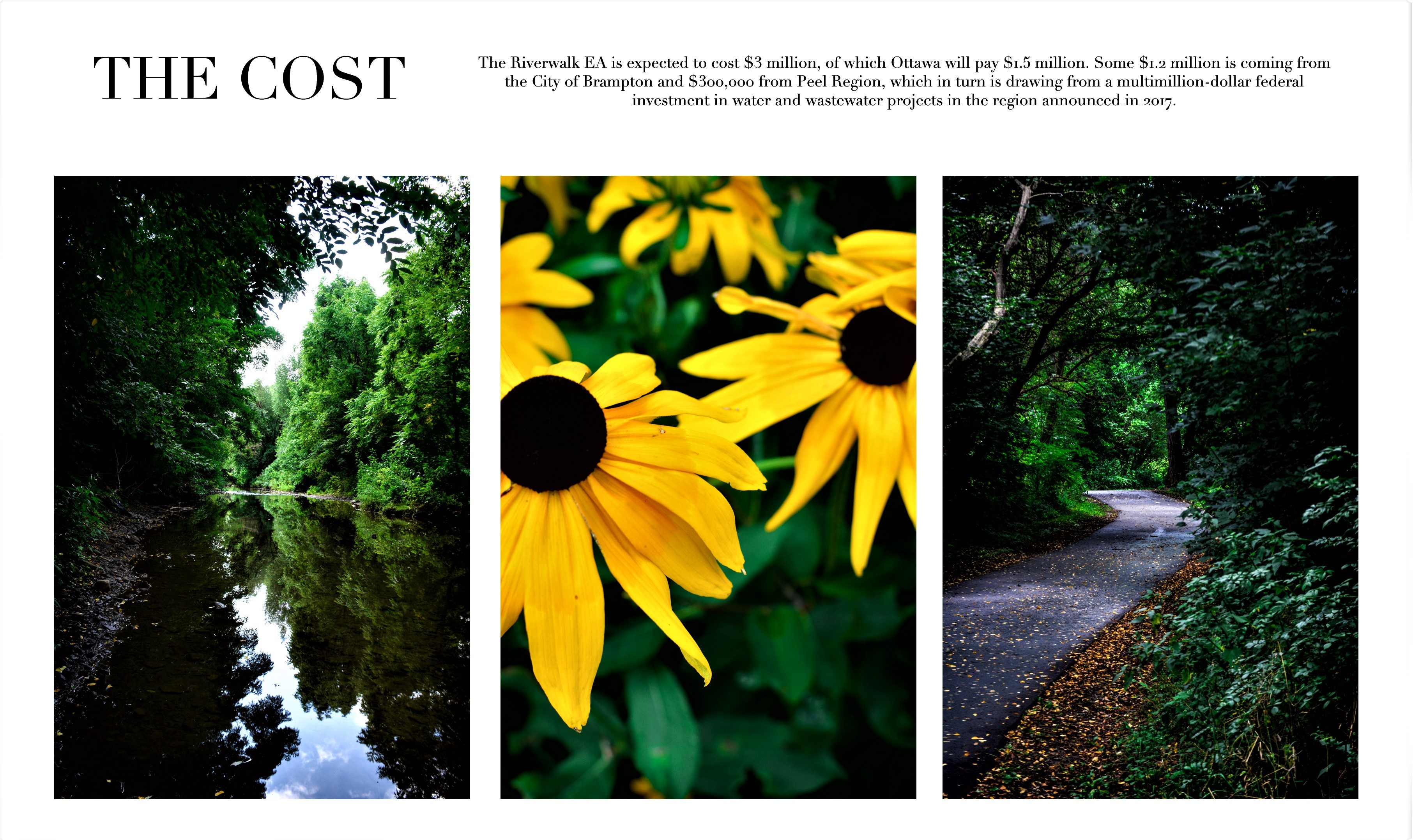
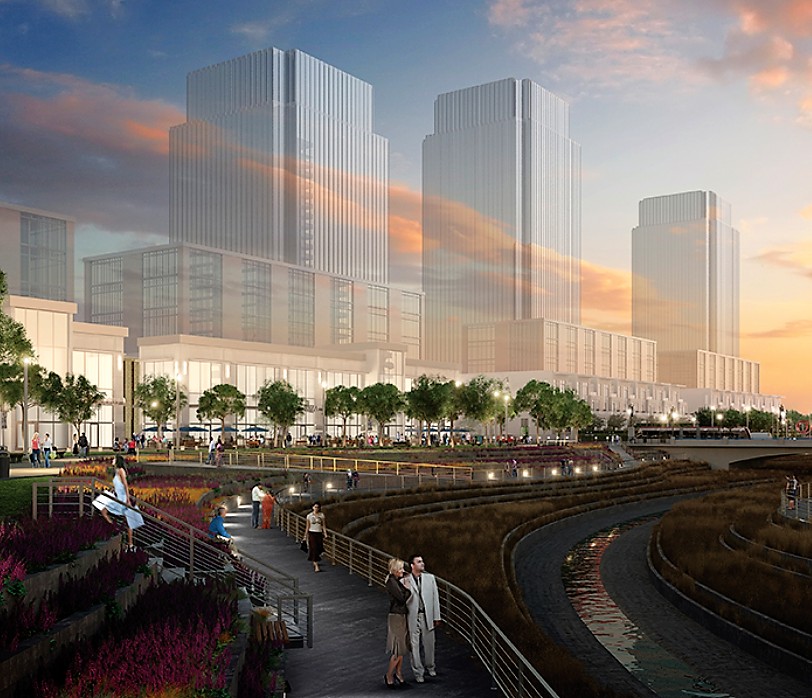
The City and TRCA have since 2004 sought alternative ways to protect the downtown from future flood events and unlock the potential for revitalization. Once the EA is complete, the city, region, province, and other stakeholders will have a clearer idea of how to prepare Canada’s ninth largest city for the future. Currently, that future, and the key to unlocking much of Brampton’s potential is being held hostage by the possibility of climactic events whose spectre has left the downtown stagnating, in the captive grip of a “once in a century storm”, which now seem to come round far more often.
Two weeks ago, in the atrium at City Hall, the TRCA's environmental assessment team unveiled its EA report to the public, a forward-looking plan for flood mitigation to finally remove the shackles from downtown. The idea is to eliminate the potential risks to public health, safety and property. Conservation authorities have been delegated by the province to define and oversee one-zone floodplain policies. They are, by nature, restrictive and intended to limit the amount of development that occurs in a floodplain.
Anneliese Grieve, a principal with Toronto-based Strategic Environmental Planning Solutions, led the presentation, and was joined by Alex Taranu, senior advisor, architectural design for the City of Brampton. Grieve was hired to oversee the EA process. She brings over 28 years of experience as a recognized expert in the application process for approval of complex and controversial projects. She also knows about social impact assessment and stakeholder engagement, and sits on the board of the Ontario Association for Impact Assessment.
The problem of flooding in our SPA is two-pronged: upstream (north of Church Street and Rosalea Park) and downstream (in the flood plain leading into the downtown core).
The existing Etobicoke Creek by-pass
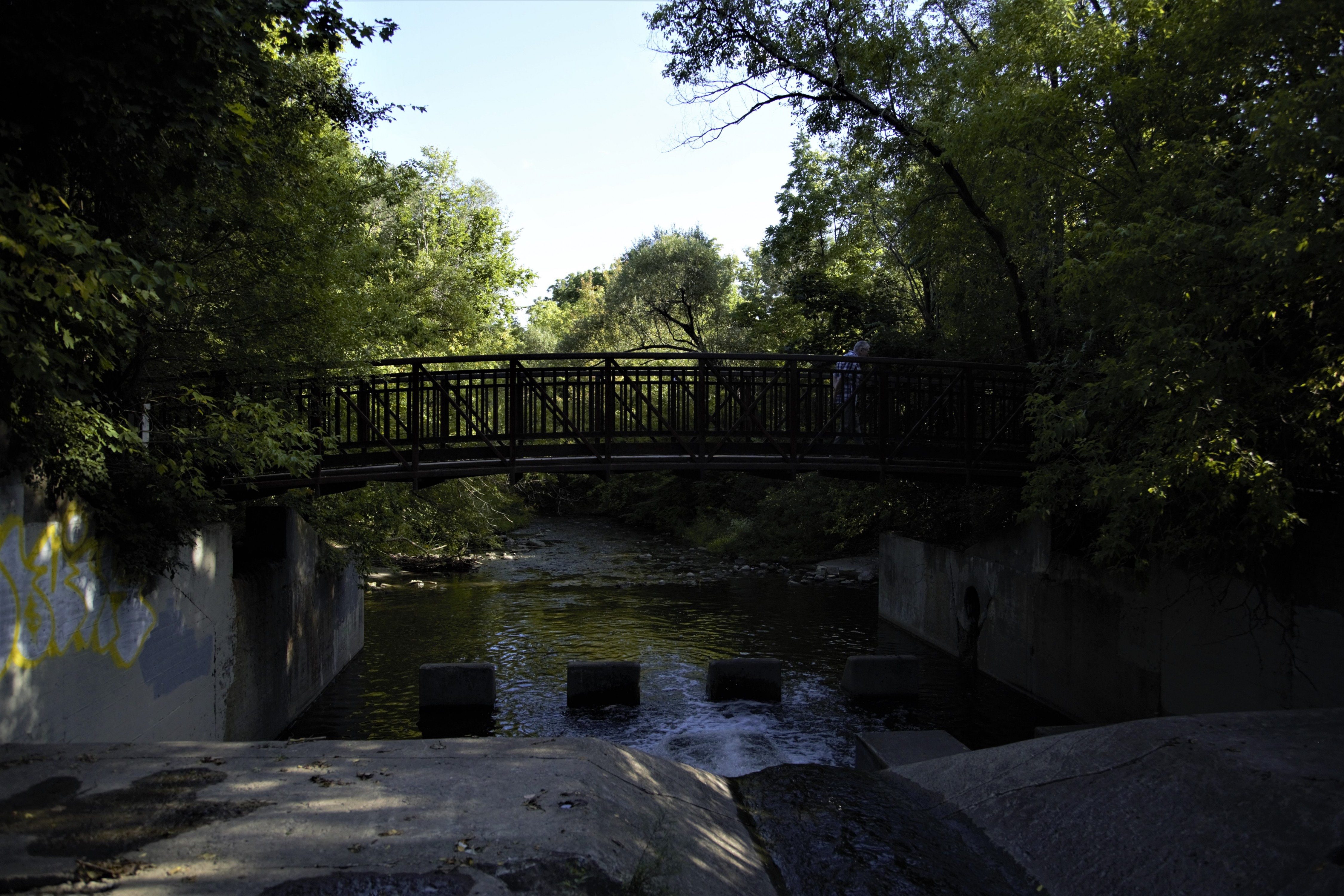
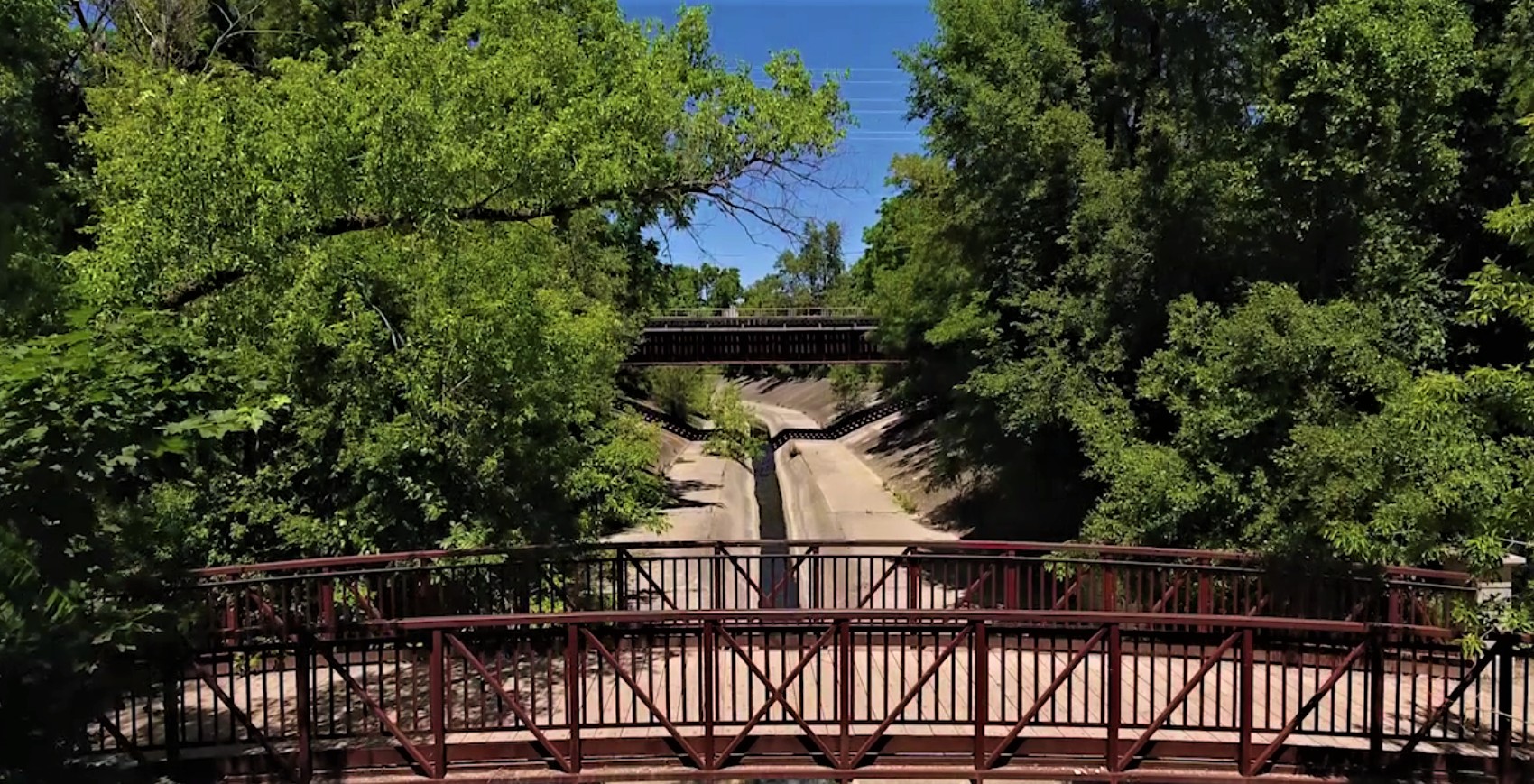
Grieve said “trying to shoehorn a solution into an urban area” has been a 10-year process in Brampton.
Many alternatives were studied by the engineers – four upstream, and three downstream – but in the end, a deepening and widening of the current channel was targeted as the best alternative. Right now, there are plenty of constraints, mostly due to the creeping residential development over the past half-century.
The assessment looked at whether it could avoid property impacts in an “extremely complex urban environment.” Whether the project includes buying some properties “at fair market value”, this was one of the most contentious issues playing itself out in real time on the recent Thursday evening. Many of the people at City Hall were local property owners, expressing concerns about the future of their homes, and their city. “We’ll have to look at private property positions,” said Grieve.
This massive project fits nicely under the umbrella of the Urban Design Master Plan, but Grieve didn’t sugar-coat the fact there will be short-term and long-term disruptions: construction noise and the massive movement of earth, the cutting down of trees, a loss of some grasslands, and even upending the delicate eco-balance of Etobicoke Creek during the re-build stage of a new diversion channel.
But the net effects will be deep and long-lasting improvements of the public realm and open spaces. This will be key to unlocking the handcuffs that have bound the city from encouraging major development in the SPA, and hopefully inspire a domino effect of smart growth spreading out from the entire city centre.
The idea, said Grieve, “is to remove the risk to downtown Brampton” – to eliminate all future water worries.
The next step is releasing the EA report to the public in January of 2020, allow for more input, then finalize it. That’s when the big lifting begins: finding financing, and completing a final design.
Jeff Bowman, city councillor for Wards 3 and 4, estimates the cost of the entire project could be over $600 million, with at least $100 million of that picked up by the city. For a city bragging about a zero-tax increase in its last budget, and offering up no tax levy to create a fund for such infrastructure fixes (the key to unlocking the city’s potential), finding a way to contribute $100 million might be a stretch. Bowman suggests debt financing is a possibility, with the payback coming from a massive intake of development charges and other revenues, such as dramatically increased tax dollars, when new builds spring up in the SPA.
It’s clear a super-sized bypass channel will make the downtown lands very water resistant. “This is a game-changer for this city,” said the councillor. Adding: “Who wants to build a 25-storey building in the downtown right now, and then have to pay $8 or $9 million in environmental charges?”
Bowman thinks an easing of the EA process under the Doug Ford regime might speed-up Brampton’s ability to get on with the job of solving its historic water issues – but everything is dependent on whether funding can be found.
He doesn’t put much faith in the federal government helping out, even if four of five Brampton Liberal MPs were recently returned to the ruling government’s caucus in Ottawa, joined by a fifth rookie Liberal, after the last federal election. Bowman hopes money can be made available under federal environmental and sustainability programs.
The old bypass is not wide or deep enough to carry the volume of water needed to keep the downtown dry after a major water event. And considering the ferocity and frequency of recent storm activity, old mitigation measurements likely no longer hold water.
The stakes seem to ratchet up by the day. How can the city extend a light rail transit line through the floodplain along the Etobicoke Creek that leads into the downtown core without a robust flood mitigation plan? How can new construction of a possible university take root, and other projects, such as a central healthcare hub, a possible hotel-convention centre or even a major-league sports facility in the downtown if it is still vulnerable to flooding that matches or exceeds Hurricane Hazel levels? In a world groaning with climate-change concerns, seeking new solutions to potential flooding seems even more timely.
The Downtown Reimagine plan was supposed to fix some of the infrastructure problems created by Etobicoke Creek running beneath Main Street. It’s now on hold because the improvement costs are too punitive and underwater channels were not possibly understood by city staff, despite the project’s approval years ago.
The hope is that a final flood mitigation fix will open up the SPA to more fulsome development – and stay in line with provincial standards.
The engineering work needed to complete the EA report is almost done, and simply awaits more feedback from the public in January. This potential project design will dwarf the 1952 bypass channel construction.
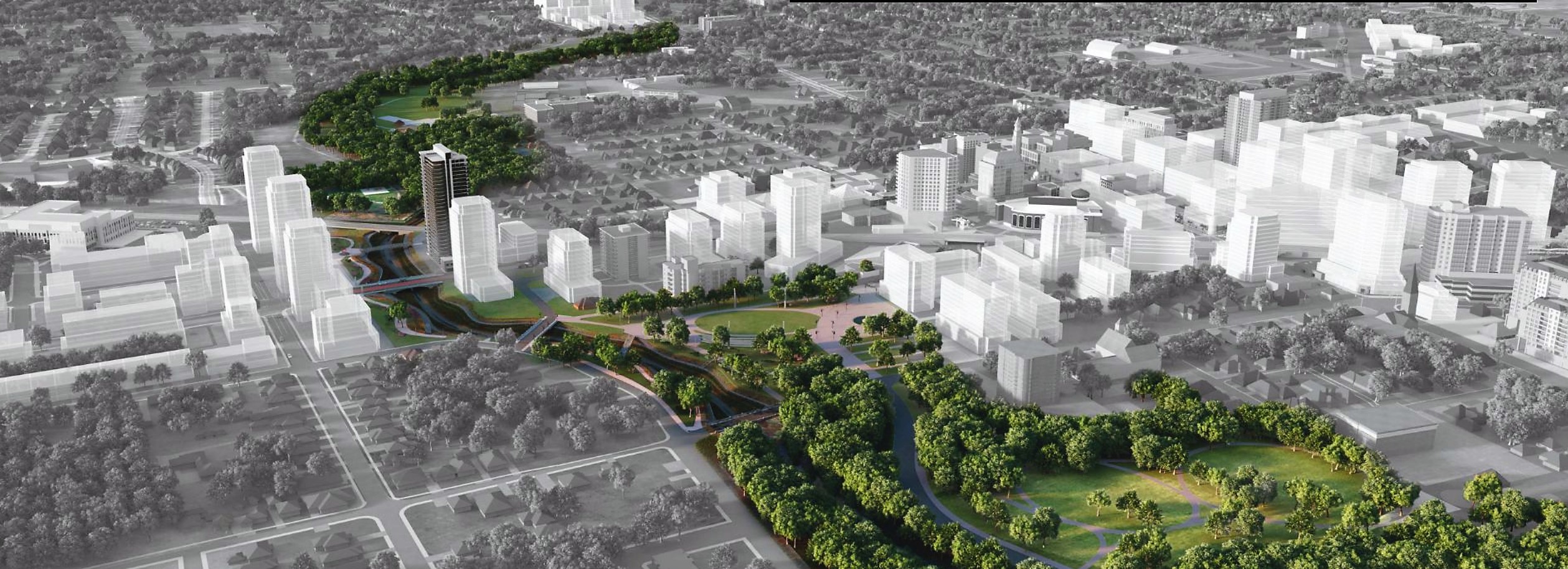
If the project gets the go-ahead, the disruption will be extensive. The channel which will be much deeper and wider, and includes the reconstruction of four major bridges, and some extensive berming around the affected areas. There will be some temporary ecological damage to the creek and the surrounding areas. The current channel, to withstand a truly epic event, will be widened to 50 metres, and run 1.2 metres deeper.
Thursday was the third public meeting, and unveiled the preferred alternative design concept alignment, the project impacts, mitigation measures, and an update on consultation activities completed to date. Next steps were also discussed, but everything is dependent on financing, and coming up with the final design.
The idea is to unlock the potential for revitalization and redevelopment – to help the core reach its full potential, said Grieve.
The flood problem upstream is acute because the creek spills out of the valley and over the banks north of Church Street. Downstream, it’s not able to flow past Centennial Park freely and backs-up out of the valley.
The Urban Design Master Plan is being developed as a companion piece to the EA. It will focus on open space and public realm possibilities.
The final solution aims to create more room in the valley and the channel, and this means enlarging the bridge openings. The bridges impacted will be on Church, Scott, and Queen Streets, and the CN Rail bridge. For example, two alternatives to bridge construction were unveiled: they could remain open during removal and reconstruction, at a reduced capacity of one single traffic lane and signalized crossing, or entirely closed. The idea is to time the bridge replacements and therefore reduce traffic tie-ups. Either way, local traffic will be impacted. The noise, dust and vibration kicked up during the builds will also effect homeowners, park users and businesses. The idea is to time the bridge replacements and therefore reduce traffic tie-ups. A traffic management plan and a communications strategy will be developed during the detailed designing.
It's not clear how the entire project could impact City Council’s plan to build an LRT right up Main Street, in the SPA, along Etobicoke Creek. It seems unlikely that any LRT approvals could move forward before the flood issue is finally solved. The TRCA has indicated it wants to help move the LRT plan forward, but has also made clear that safety issues related to the flood threat is its priority. Until this gets solved, the LRT is a pipe dream.
The terrestrial effects will include the removal of forest and woodlands and grassed areas adjacent to Etobicoke Creek. Excavation of the valley lands could mean the realignment of some roads. The plan will include a tree compensation plan, and guidelines to reduce risk to migrating birds, or species at risk. Re-establishing vegetation will be comprised of native species and will eventually contribute to a healthier ecosystem.
Discussing the nuisance effect from completing the flood mitigation project seems a moot point until (or if) a final project gets funded.
Brampton’s 2040 Vision, the document that now guides the city’s future growth, includes eco-parks, social and health harmony, designed communities, walking and cycling networks, art hubs, and a vibrant, flood-free downtown core, thanks to the “Riverwalk”, the culmination of the flood mitigation plan.
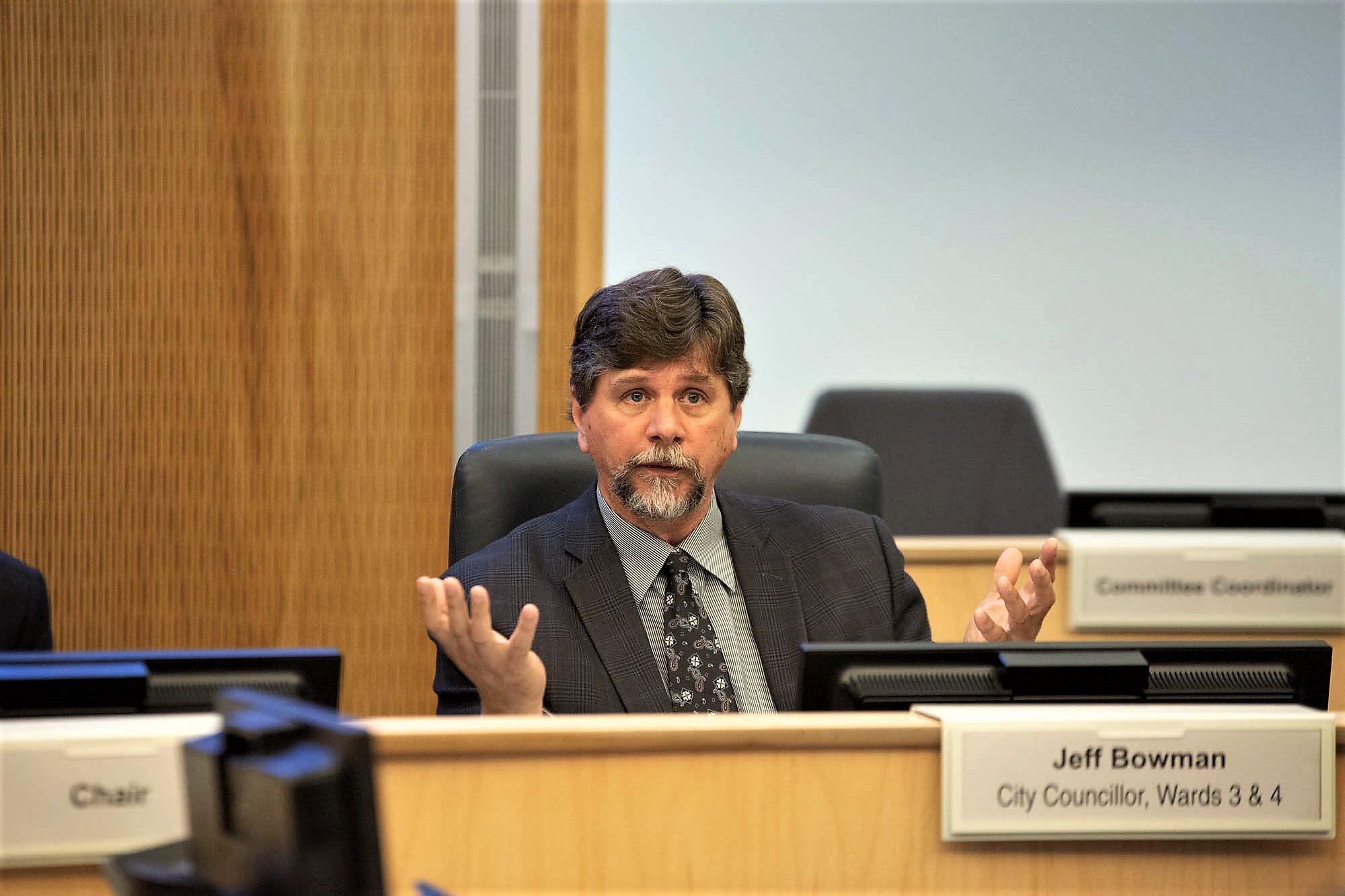
Councillor Jeff Bowman
This vision is dependent upon finding a solution to the flooding that has dogged the city almost from its inception. Between 1854 and 1952, Brampton’s historic downtown was subject to near annual occurrences of flooding. A trapezoidal bypass channel built in 1952 was a big help. It eliminated the occurrence of low to moderate magnitude flooding, but 31 hectares of downtown Brampton remained vulnerable from a 350-year storm. We’re talking Noah-like water. Biblical floods that could threaten a city’s survival. Another Hurricane Hazel would devastate a downtown already reeling from years of ineffective solutions to its infrastructure needs. But, again, all of those measurements were based on outdated climactic realities. What used to be considered biblical, now flash on our screens routinely, whether it’s the recent sinking of Venice or the washing away of entire chunks of eastern Ontario, Southern Quebec and parts of New Brunswick in the spring.
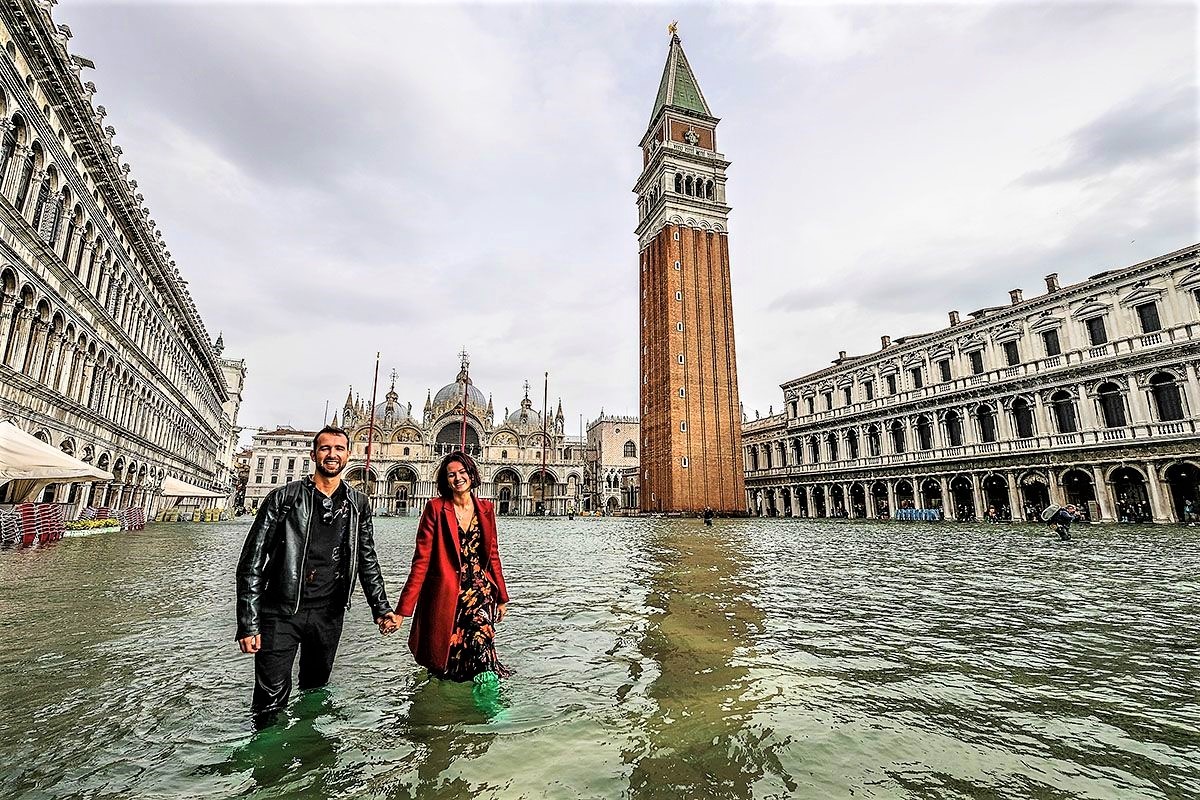
Venice experienced catastrophic flooding in November
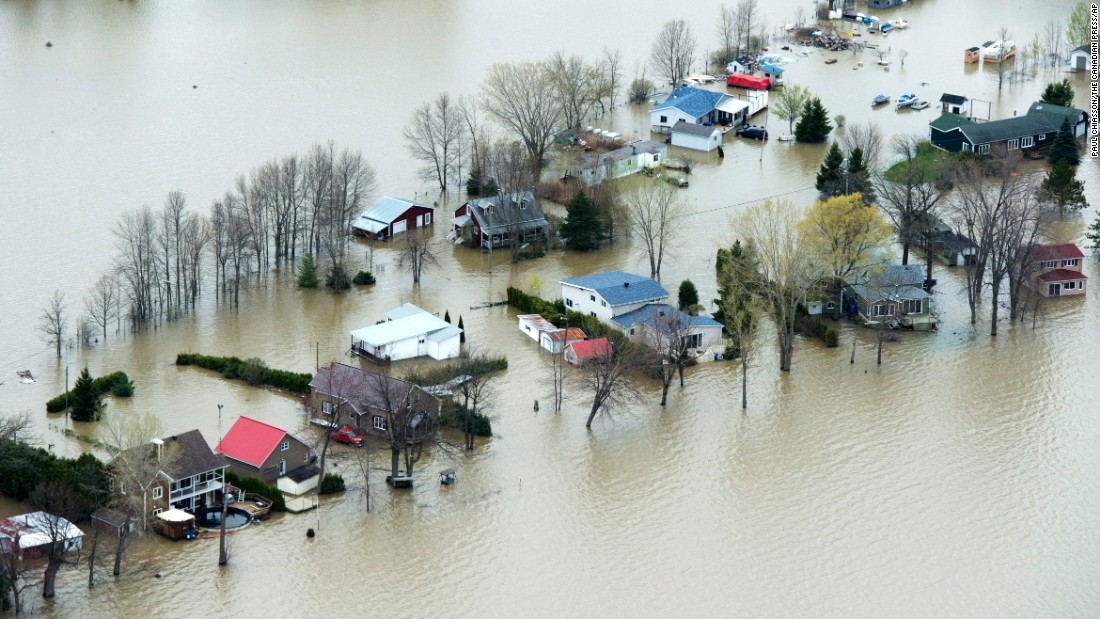
Colossal flooding in Quebec this past spring
The TRCA and the City of Brampton want to build a diversion that can handle anything Mother Nature can throw at it.
Taranu said the new bypass channel is also “going to be aesthetically pleasing, a public asset.” The two presenters agreed that this is the safest way to go.
A freed-up SPA will allow the city to put some meat on the bones of its Urban Master Plan. It could also assist the city in realizing its 2040 Vision which estimates the downtown population will grow to 55,000 people and 26,000 jobs by 2040.
Bowman can envision a day when the SPA will welcome post-secondary education partners, transit infrastructure, private sector development, downtown public realm enhancements, infrastructure upgrades, and plenty of arts and culture.
Submit a correction about this story


